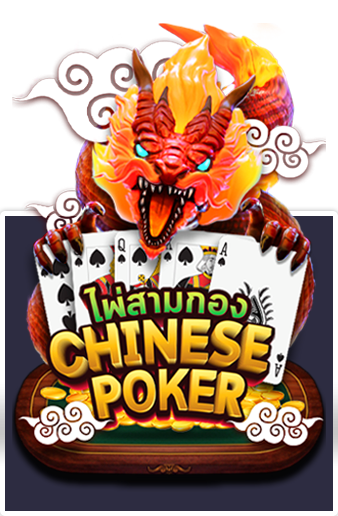










มายอามี่ 1688 นำเสนอเกมดีลเลอร์สดที่หลากหลาย เกมเหล่านี้สตรีมแบบเรียลไทม์จากสตูดิโอมืออาชีพ ช่วยให้ผู้เล่นโต้ตอบกับดีลเลอร์สดและผู้เล่นอื่น ๆ สร้างสภาพแวดล้อมการเล่นเกมที่น่าตื่นเต้น
เกมเจ้ามือสดของเรามีตัวเลือกยอดนิยม เช่น Live Blackjack, Live Roulette และ Live Baccarat เพื่อให้มั่นใจว่าผู้เล่นสามารถเพลิดเพลินกับเกมคาสิโนที่พวกเขาชื่นชอบในบรรยากาศที่น่าดึงดูดและมีชีวิตชีวา เพื่อใช้บริการกับผู้ให้บริการเว็บคาสิโนออนไลน์ได้อย่างมั่นใจมากขึ้น
เนื่องจาก miami 1688 ทางเข้า มือถือ มีรูปแบบการให้บริการทางเข้าที่ควบคุมโดยหน่วยงานที่เกี่ยวข้อง ให้เป็นไปตามกฎหมายที่กำหนด รวมถึงการควบคุมมาตรฐานการบริการในด้านต่างๆ และยังมีการตรวจสอบการบริการอย่างต่อเนื่อง
ทำให้สมาชิกที่สมัครใช้บริการเว็บคาสิโนออนไลน์ถูกกฎหมายที่คุณจะไว้วางใจในการสมัครและใช้บริการอย่างปลอดภัยปลอดภัย 100%

รีวิวเด็ด ดูเกมก่อนได้ ลงทุนชนะเยอะ สมัครง่าย เล่นได้ไว อัพเดทระบบเกมออนไลน์ เว็บแตกง่ายมากมาย เกมทั้งหมดอัพเดทอยู่เสมอ คุณสามารถทำเงินได้จริงทุกวัน Miami 1688 สล็อต มีเว็บต่างๆ มากมาย การเดิมพันออนไลน์เป็นเรื่องสนุก เว็บสล็อตแตกบ่อย เกมเล่นง่าย กับค่ายสล็อตออนไลน์คุณภาพ เว็บสล็อตแตกง่ายที่สุดในปี 2024
รับประกันสล็อตแตกง่ายที่สุด โบนัสที่ใหญ่ที่สุดในการทำเงินจากนักพนันที่เล่นจริงสามารถพิสูจน์ตัวเองได้ แตกง่าย สามารถลองเล่นได้จริง เว็บสล็อตมักจะหยุดชั่วคราวสำหรับผู้เล่นและสมาชิกใหม่ทุกคน คุณสามารถร่วมสนุกไปกับเกมสล็อตออนไลน์ บนเว็บ มายอามี่ 1688 ของเรา คุณจะพบเว็บเกมคุณภาพ พร้อมอัพเดทเกมใหม่แล้ววันนี้
การลงทุนประเภทนี้จะแตกต่างจากการลงทุนทั่วไป หาเงินได้ง่าย เร็วขึ้น ไม่ต้องเหนื่อยและไม่ต้องมีความรู้เรื่องเกมมากนัก การรู้เพียงกฎพื้นฐานของเกมก็สามารถสร้างรายได้จากการเล่นได้อย่างง่ายดาย และเครื่องสล็อตที่เพิ่งเปิดใหม่มีตัวเลือกนี้ ทำให้สมาชิก miami 1688 ทางเข้า มือถือ สามารถเข้าถึงแจ็คพอตได้มากกว่าที่อื่น จึงทำให้สามารถเล่นสล็อตผ่านเว็บใหม่ที่เพิ่งเปิดได้ ถือเป็นการลงทุนที่น่าสนใจที่สุดแห่งปี เว็บสล็อตที่ถูกพัฒนามาจากเกมสล็อตแมชชีน และได้จัดทำเว็บให้เข้าถึงได้สะดวกยิ่งขึ้น
มีเว็บสล็อตแตกง่ายมากมาย มายอามี่ 1688 รองรับเกมบนโทรศัพท์มือถือทั้งระบบ Android และ iOS ให้บริการที่ตอบโจทย์การแตกบ่อย เคลียร์ และแตกสล็อตบ่อย เข้าเล่นสล็อตเว็บแตกง่ายมีเรื่องราวมากกว่าเดิม มีโปรโมชั่นที่ดีที่สุด โบนัสง่าย ชนะเยอะ สล็อตชนะง่าย ทุนต่ำให้คุณได้สนุก










รวมถึงระบบการบริการ miami 1688 ทางเข้า มือถือ ที่สะดวกสบายให้ผู้เล่นได้ใช้งาน มีเว็บสล็อตแตกง่ายที่มาพร้อมกับเทคนิคการแตกบ่อยครั้งและกลยุทธ์การเดิมพันที่มีกลยุทธ์ในการสร้างรายได้ มีช่องแตกง่ายที่ไม่ถูกจำกัดด้วยพื้นที่ หาเงินจากเว็บสล็อตที่ง่ายที่สุดในปี 2024 เหมาะสำหรับผู้เล่นในยุคที่ต้องการความเร็ว และสามารถสร้างรายได้อย่างรวดเร็วและเพลิดเพลินกับเว็บสล็อตที่มักจะแตกง่าย
การเล่นนั้นง่ายกว่ามาก มายอามี่ 1688 มีสล็อตแมชชีนมากมายพร้อมระบบฝากหรือถอนเงินที่สามารถทำได้บนโทรศัพท์มือถือของคุณ รางวัลแจ็กพอตค่อนข้างสูง แต่ค่าธรรมเนียมเริ่มต้นเพียง 1 บาท ต่อ 1 รอบการหมุนสล็อต และหากต้องการทำกำไรเพิ่ม คุณสามารถเพิ่มเงินได้สูงสุด 5,000 บาท โดยการเพิ่มจำนวนเงินเพื่อหมุนสล็อต คุณสามารถทำได้ง่ายๆ โดยคลิกที่คำว่า “เดิมพัน” จากนั้นเลือกจำนวนเงินที่คุณต้องการหมุนสล็อตในแต่ละเทิร์น

ช่องทางประหยัดค่าใช้จ่าย เนื่องจากใช้เครดิตฟรีมีเงินจริงเป็นทุน เพื่อวางเดิมพันกับการพนันออนไลน์ทุกชนิด และหากมีกำไรสมาชิกก็สามารถถอนกำไรนั้นไปใช้ได้ทันที เว็บมีความแตกต่างจากการเล่นพนันออนไลน์แบบเดิมๆ ด้วยผลพลอยได้ต่างๆเหล่านี้ที่มีให้กับสมาชิกทุกคนอย่างแน่นอน จึงเป็นช่องทางที่สามารถตอบสนองความต้องการได้
สำหรับใครที่ชอบเล่นออนไลน์ miami 1688 เข้าสู่ระบบ ลงทะเบียน ก็เป็นทางเลือกที่ดีอย่างแน่นอนในการเลือกสมัครสมาชิก พร้อมลงทุนในการแจกเครดิตเกมออนไลน์ฟรีโดยไม่มีเงื่อนไขในการฝากเงินเพื่อใช้บริการก่อน และยังเปิดโอกาสกว้าง ๆ ให้กับสมาชิกทุกคนอย่างชัดเจนไม่ว่าจะเป็นผู้เล่นที่มีทุนมากหรือทุนน้อยก็ตาม โดยสามารถเลือกเข้ามาได้ตลอดเวลาและสร้างผลตอบแทนให้ตัวเองได้ มายอามี่ 1688
สล็อต ฝากถอน ไม่มี ขั้น ต่ํา วอ เลท เว็บตรงไม่ผ่าน เอ เยน เว็บไซต์คาสิโนมากกว่า 10,000 แห่ง ทั้งที่เปิดมายาวนานและเพิ่งเปิดใหม่ เว็บไซต์บางแห่งเปิดขึ้นเพื่อหลอกลูกค้าให้ฝากเงินแต่ไม่ให้เครดิต เราอยากให้ผู้ที่สนใจเล่นเว็บพนันออนไลน์มารู้จักเว็บไซต์ของเรา เราเชื่อว่าเว็บไซต์การพนันส่วนใหญ่ไม่แนะนำข้อมูลเว็บไซต์ส่วนบุคคลให้กับลูกค้า แต่เรายินดีแนะนำข้อมูลส่วนบุคคลเกี่ยวกับเว็บไซต์และดีอย่างไร บริการ ของเราเปิดมานานกว่า 10 ปี
สล็อต ฝากถอน ไม่มี ขั้น ต่ํา วอ เลท เว็บตรงไม่ผ่าน เอ เยน เว็บไซต์คาสิโนมากกว่า 10,000 แห่ง ทั้งที่เปิดมายาวนานและเพิ่งเปิดใหม่ เว็บไซต์บางแห่งเปิดขึ้นเพื่อหลอกลูกค้าให้ฝากเงินแต่ไม่ให้เครดิต เราอยากให้ผู้ที่สนใจเล่นเว็บพนันออนไลน์มารู้จักเว็บไซต์ของเรา เราเชื่อว่าเว็บไซต์การพนันส่วนใหญ่ไม่แนะนำข้อมูลเว็บไซต์ส่วนบุคคลให้กับลูกค้า แต่เรายินดีแนะนำข้อมูลส่วนบุคคลเกี่ยวกับเว็บไซต์และดีอย่างไร บริการ ของเราเปิดมานานกว่า 10 ปี

